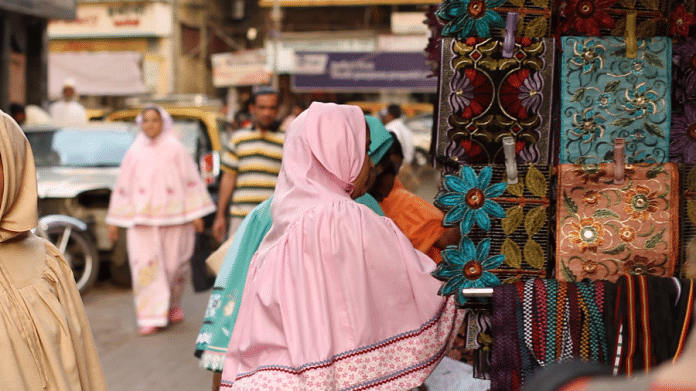In the first instance of legal intervention in the issue of female genital mutilation (FGM), the Supreme Court has issued a notice and sought a detailed reply from the Centre and four states.
Moving to scrutinize a controversial, coercive and closely guarded cultural ritual, the Supreme Court issued a notice this week seeking a detailed reply from the centre and four state governments on the issue of female genital mutilation.
But the petition filed by Sunita Tiwari, a lawyer from the Delhi High Court, does not include victims or activists who have waged a battle to break the silence on the issue of female genital mutilation (or FGM) in recent years.
“I would be very happy to have victims participate in the petition,” Sudha Tiwari told ThePrint. “The research and data longtime campaigners would bring to the table, would only give a boost to my plea to bring in a specific law ending the practice.”
The apex court’s notice is the first instance of legal intervention in the practice of female genital mutilation (FGM) or khatna in the country. The court asked the central government and the states of Maharashtra, Rajasthan, Gujarat and Delhi for a response. In India, FGM is practiced by the Dawoodi Bohras, a small, closely-knit sect among Shia Muslims.
The issue has been the subject of an unprecedented campaign by some women was highlighted in a recent online signature drive.
Now, some campaigners and victims from the community say they are conducting discussions to weigh the benefits of becoming parties in the petition.
The practice of FGM entails the removal of skin from the clitoral hood of young girls (typically, between the ages of six and twelve).
While admitting the petition, the Supreme Court bench constituted by Chief Justice J S Khehar, Justice D Y Chandrachud and Justice Sanjay Kishan Kaul said, it “has highlighted an extremely important yet sensitive issue”.
The petition was filed in January after a year and a half of research on the issue, Tiwari said. But she said support from the activists was not forthcoming.
“I contacted several victims and campaigners, and waited for a year and half for people to come forward”, Tiwari said. “I told them that I would fight your case as a lawyer pro bono… But since nobody came forward, I decided to file a petition myself.”
Tiwari said she was compelled to take action after reading a newspaper article on the subject.
“As a woman, the practice seemed extremely repugnant to me. You deform a woman’s body under the pretext of religious ritual, causing her immeasurable mental and physical agony,” she said.
Rough estimates suggest that 90 percent of Bohra women undergo the cut, but no official records are available in this regard.
“It is not a religious issue, it is an issue of human rights and child rights,” Tiwari, who has worked on other cases related to child rights, said. “It has no mention in either the Quran or the Islamic law,” she adds, pleading that the issue not be mixed up with triple talaq. It is only practiced to control the sexual urges of women, thereby reducing them to lesser beings, she explains.
It is a sentiment echoed by other FGM campaigners in the country as well. Masooma Ranalvi, a publisher from Delhi and a member of Speak Out on FGM – and a survivor of FGM herself – told ThePrint that it is a “human rights issue, and must be treated as that (as opposed to being treated as a minority issue)”, in an interview last year.
However, Ranalvi, who has been one of the most vocal campaigners on the issue, said that she was not kept in the loop about Tiwari’s petition.
It is odd, she said, that “none of us were contacted, even though we have been in the public domain for at least three years. We are now considering whether to intervene in the petition or not”, Ranalvi added.
The online campaign to end FGM started by Ranalvi and others has received over 50,000 signatures, and the group is hopeful that a meeting with Women and Child Development Minister, Maneka Gandhi, would be scheduled soon.
After weeks of waiting for an acknowledgment from the Ministry to their petition, the group had knocked on the doors of the United Nations to help end the despicable practice, ThePrint had reported last year.
One source in court told ThePrint that efforts were made to collaborate with community campaigners over the issue, but they did not yield results. There appears to have been some disagreement over semantics between the two parties as well.
The campaigners, who have endeavoured to bring the secretly practiced ritual in the open, insist that it be referred as khatna or cut, and not mutilation, since in the Indian context, the female genitalia is only cut, and not mutilated.
However, Ranalvi says, the petition is a welcome step to the extent that the Centre would at least be compelled to respond now.
-Sanya Dhingra is a Reporter with ThePrint. You can follow her on Twitter @DhingraSanya
Picture Courtesy: sahiyo.com






